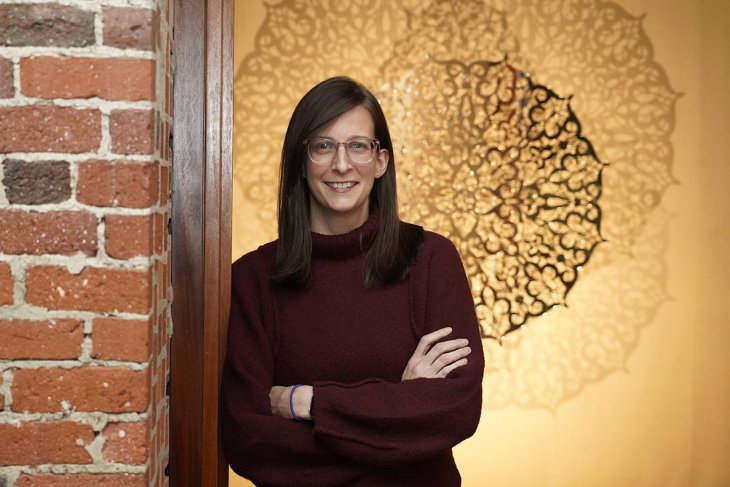Pam Meadows

"I want the gallery to feel like less of a pristine white cube … I want it to feel more like an elevated community space.”
When students ask Pam Meadows what she does as a curator, she often tells them that she’s a visual storyteller. “I make stories that are driven through the scope of the artists whose work I’m exhibiting,” she says. “I’m nurturing a story that hopefully prompts a dialogue.”
Meadows, who began her tenure at Exeter last summer, has been telling stories in academic and gallery settings for the past 14 years, most recently at the Boulder Museum of Contemporary Art in Colorado. Her style of curation— interactive and site-conscious —often pushes conventional definitions and expectations. At the University of Northern Colorado, for example, Meadows transformed the gallery in to a 1950s soda fountain where visitors could not only view photographs and artifacts from the atomic era, but also order a 25-cent hot dog.
“I really want to lift the veil of what a gallery space or museum does, how it functions,” Meadows says. “I want the gallery to feel like less of a pristine white cube where there are these implied behaviors or norms. I want it to feel more like an elevated community space, a safe space for students to come and just look at things.”
In her curatorial debut for the Academy — “Still No More,” on view at the Lamont Gallery through April 15 — Meadows stays true to her ethos and invites artists and students alike to reconsider preconceived notions. “What would a still life look like in the contemporary moment as we think about books being replaced by iPads and cellphones?” she says. Six artists, working in ceramics, photography, sculpture, painting and installation, tease the modern out of the 15th-cen-tury tradition. “The work expands the potential of what a still life can be, while preserving the essence of what makes the genre iconic and memorable,” Meadows says.
Much the same can be said of Meadows’ hopes for the Lamont Gallery. “I’m challenging myself with thinking through what our students want to see and how can I make this space a place to help facilitate that,” she says, adding, “If I can impact their experience here so that when they leave they think, ‘Wow, I learned something from her’ or ‘She made me think about something that I otherwise wouldn’t have thought of’ — that’s the ultimate reward.
—Jennifer Wagner
Editor's note: This article first appeared in the winter 2023 issue of The Exeter Bulletin.
